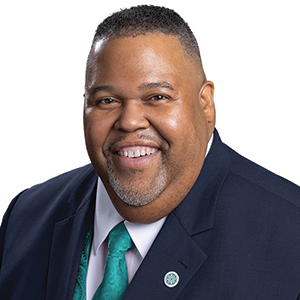As 2022 winds down, educational institutions find themselves in the same situation as many other businesses and organizations throughout the country — profoundly impacted by the events of the past several years and working to define the “now” normal in which we live.
The term “reset ready” has found its way into the lexicon, but a reset denotes a return to a former standard. That’s not what we’re facing now. The COVID-19 pandemic toppled the first domino in a line that is still falling, indelibly changing every facet of our society.
Our economy no longer operates like it did two years ago. What it means to work has fundamentally changed — and because of that, what it means to go to college, receive an education and have a career has also changed.
In many cases, students no longer go to college simply to “find themselves.” The economic hardships of the pandemic, along with new job opportunities that require little, if any, formal postsecondary education, have created a generation of young adults who are objective-focused. They want to find the shortest route between themselves and a paycheck that can support them and their families.
The gig economy offers some things that a traditional college-to-job career path can’t, such as quick hiring processes, quick payouts and flexible hours. People can apply today, work today and have money in their pocket today.
Those of us leading companies and institutions that have been part of the traditional education and employment chain might retort with something along the lines of, “You’re still much better off going to school, developing marketable skills and building a stable career that leads to increased earning potential over the years.” But employees and potential students who saw their job prospects and bank accounts run dry during the depths of the pandemic might not agree. And that’s the fundamental battle that we’re fighting.
So, what can we do about it? How can Northeast Ohio’s educational institutions, businesses and other organizations work together to adjust to the new landscape? At its core, it comes down to meeting students where they are. Those who chose to continue their college education in 2020 and 2021 flocked to virtual services, including online classes, testing, academic counseling, job coaching and more.
Tri-C invested heavily in both time and resources to build out its virtual infrastructure during the pandemic, and we recognize that the virtual world is not only part of our recent past and present, but part of our future, as well. Meeting students where they are means placing an increased emphasis on programs that cater to their specific educational needs, whether they are coming out of high school, returning later in life, changing careers or upskilling in their existing careers.
But these efforts to increase access to postsecondary education only matter if we produce graduates who have the skills our area businesses seek. And that is why partnerships between educational institutions and the business community will continue to be critical to Northeast Ohio’s economic health and viability.
In this end-product, workforce-oriented world of postsecondary education, degrees and certificates begin at the end. What skills do companies and organizations need, and how can we, as an education hub for the region, meet those needs at the start?
These are the answers we must continue to seek and around which we must develop solutions as we define the “now normal.” I look forward to exploring new opportunities with all of you as conditions continue to change and evolve. ●
Michael A. Baston is President of Cuyahoga Community College

